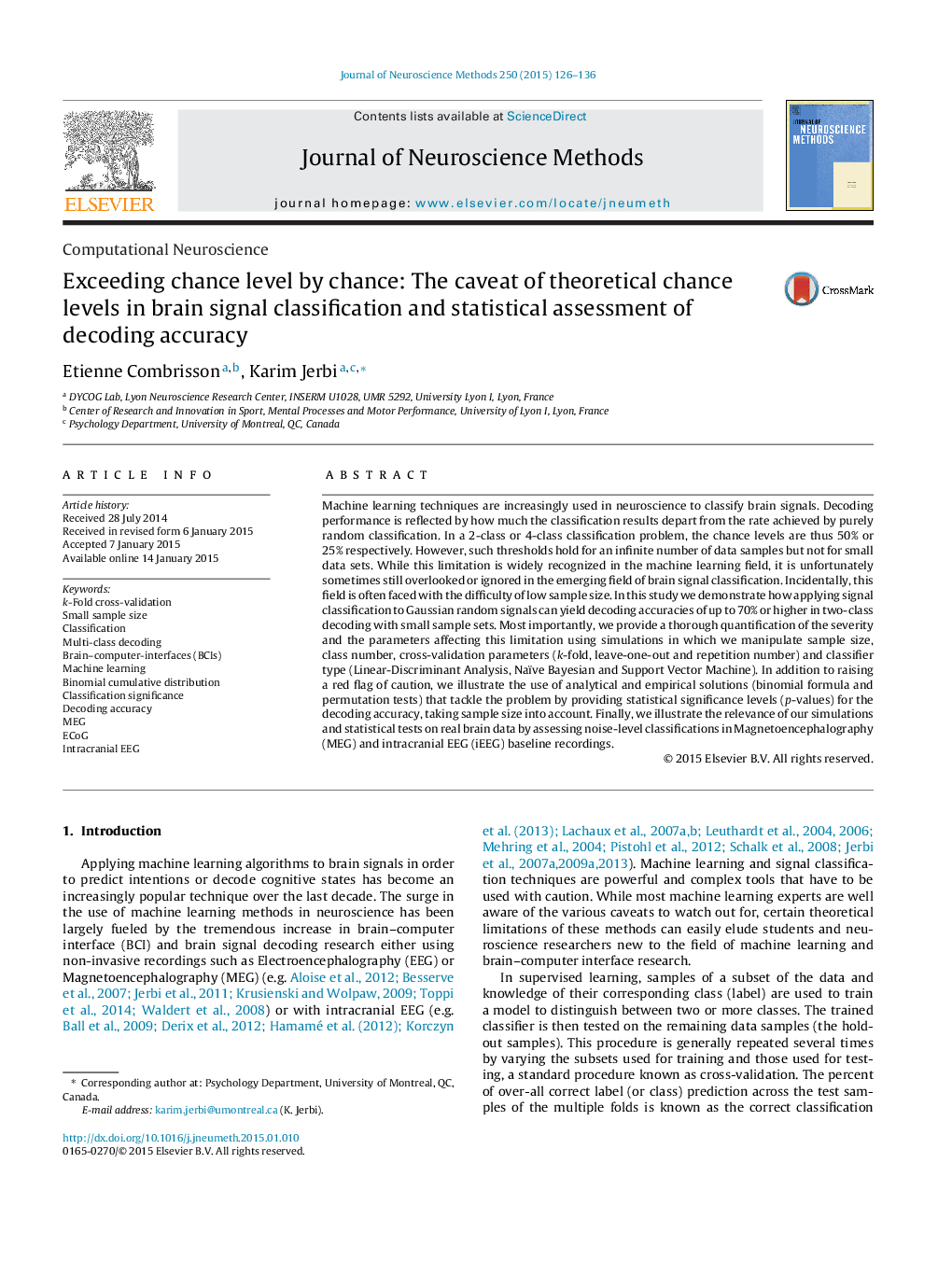| Article ID | Journal | Published Year | Pages | File Type |
|---|---|---|---|---|
| 6268216 | Journal of Neuroscience Methods | 2015 | 11 Pages |
Machine learning techniques are increasingly used in neuroscience to classify brain signals. Decoding performance is reflected by how much the classification results depart from the rate achieved by purely random classification. In a 2-class or 4-class classification problem, the chance levels are thus 50% or 25% respectively. However, such thresholds hold for an infinite number of data samples but not for small data sets. While this limitation is widely recognized in the machine learning field, it is unfortunately sometimes still overlooked or ignored in the emerging field of brain signal classification. Incidentally, this field is often faced with the difficulty of low sample size. In this study we demonstrate how applying signal classification to Gaussian random signals can yield decoding accuracies of up to 70% or higher in two-class decoding with small sample sets. Most importantly, we provide a thorough quantification of the severity and the parameters affecting this limitation using simulations in which we manipulate sample size, class number, cross-validation parameters (k-fold, leave-one-out and repetition number) and classifier type (Linear-Discriminant Analysis, Naïve Bayesian and Support Vector Machine). In addition to raising a red flag of caution, we illustrate the use of analytical and empirical solutions (binomial formula and permutation tests) that tackle the problem by providing statistical significance levels (p-values) for the decoding accuracy, taking sample size into account. Finally, we illustrate the relevance of our simulations and statistical tests on real brain data by assessing noise-level classifications in Magnetoencephalography (MEG) and intracranial EEG (iEEG) baseline recordings.
